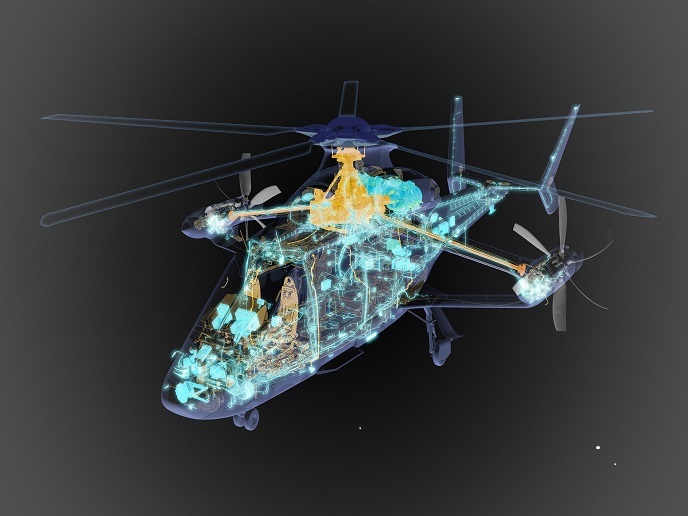Gearbox test rig for next-generation compound helicopter
The MUTR project focused on the design of the gearbox test system for the newly created Rapid and Cost-Effective Rotorcraft (RACER) helicopter demonstrator. RACER is an experimental compound helicopter developed by Airbus that combines high speed and vertical take-off and landing and features wings and propellers for propulsion support instead of a conventional tail rotor. The rotorcraft is driven by two engines, one of which can shut down and restart once in flight to save fuel and increase range. The MUTR project was funded within the framework of the Clean Sky 2 Joint Undertaking, a public-private partnership between the EU and industry set up to strengthen European aero-industry collaboration, global leadership and competitiveness. Researchers from the Czech Aerospace Research Centre (VZLU) carried out the design and implementation of an auxiliary (adaptive) gearbox that is part of a multipurpose testing device for validating special newly designed helicopter gear reducers for RACER. This is a key component for the helicopter’s drive device, transmitting power from two turbo shaft motors to the main rotor and side rotors.
Validated under emergency conditions
The team first designed the test rig and then designed, manufactured and tested the hydraulic torque loader (torquer) and the torquer test rig for the validation of RACER. “The test rig is a powerful device that allows us to trial not only the normal travel modes, but also all emergency and overload conditions to which the main rotorcraft reducer may be exposed during operation,” states project coordinator Petr Pick. The proposed test mode comprised four parts: the main gearbox plate, side load groups, adaptive gearbox, and support mechanisms. Validating the main reducer on the test rig is the same as for the actual rotorcraft, thus enabling the measured values to be applied to the verification and certification process. The energy-efficient hydraulic torquer simulated the load from the side rotors. The power transmitted by the shafts representing the drive units was conducted from the adaptive gearbox to the main gearbox, which branches into two side rotor branches and one main rotor branch. The layout results in three power loops in which the power flow can be independently changed, while simultaneously allowing the simulation of running in single-engine inoperative mode and in different flight modes of the machine.
A reliable, efficient torque loader
In addition to two pairs of gears, a unique torquer and torque meter, located in the gearbox, make it possible to perform load tests and calibrate the torquer. The hydraulic system used by the torquer not only loads the torsion, it also solves the problem of cooling gearing and gearbox bearings. According to Pick: “VZLU is developing the interconnection of the lateral rotor gearboxes via vertical transmission shafting, supported on two or three auxiliary bearing housings, to lock the two gearboxes together. The transmission shafting is connected to the lateral gearboxes by means of bevel gearings.” Gearbox testing requires an efficient, reliable and durable torque loader. MUTR exactly meets all these criteria and has been successfully validated for a load capability up to 5 900 Nm at 3 330 rpm. The device can also be applied to sophisticated load simulation systems like the RACER test rig.
Keywords
MUTR, gearbox, rotor, test rig, helicopter, torquer, rotorcraft, reducer, torque loader



